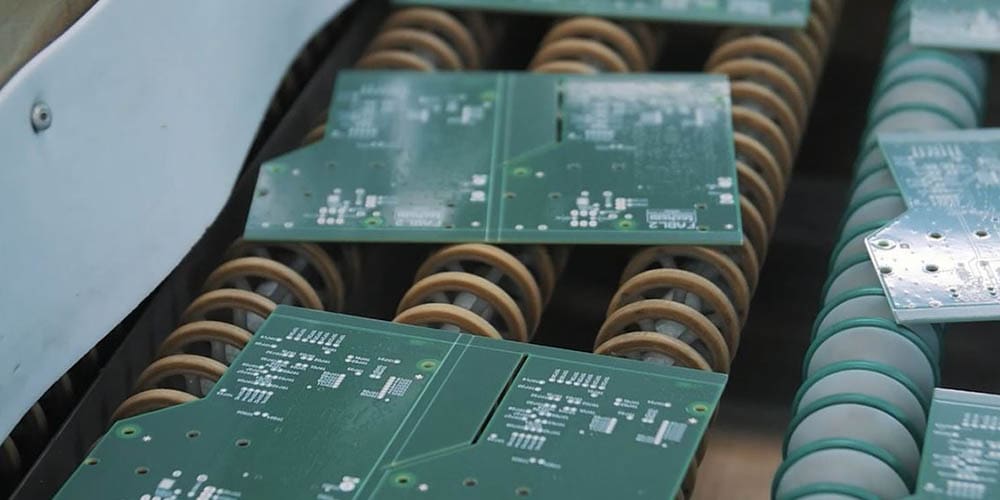Surface finishing
PCB Journey 12 :
Surface finishing
Surface finishing is a coating between a component and a bare board PCB. Mainly use for two reasons: Ensure the solderability during the populated phase and protect the copper from oxidation.
1 - OSP
OSP, stands for Organic Solderability Preservative. It is a water-based surface finish. Environmentally friendly, the boards are cleaned before going through the baths which will provide an excellent flat surface. This quick process does not require a lot of equipment which makes it a cost-effective surface finishing. OSP has a short shelf life and can be sensitive while handling. Consequently, the routing process is performed before the surface finishing application. To sum things up, OSP surface finish is environmentally friendly, provides a flat surface, is a cost effective solution that can be reactivated There are also drawbacks like short shelf life, can be sensitive while handling and this finish may expose copper during final assembly.
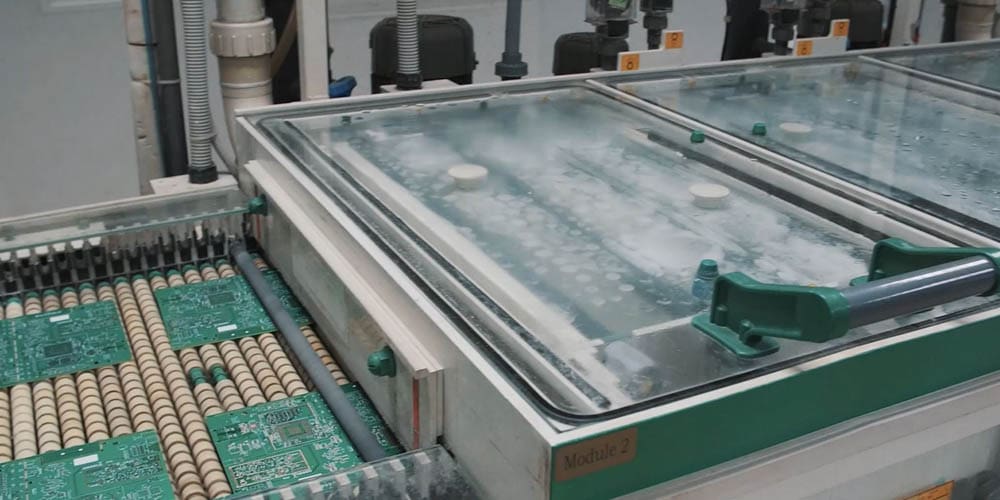
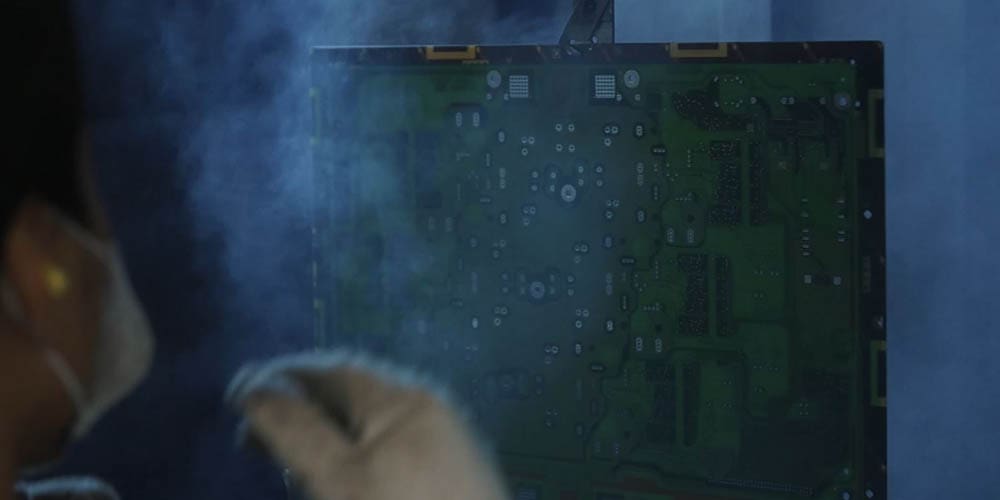
2 - LEAD-FREE HASL
Lead-free HASL is short for Hot Air Solder Leveling. it was one of the most popular finishes until a few years. Even if this finish is robust, the low price is also linked to its limitations. During this application, the entire panel goes through micro-etching to clean the board then receives a flux coating to help the surface finish adhere to it. Later, the board is immersed in liquid tin solder and is removed by using two air knives which blow hot compressed air across the surface of the boards. The lead-free solution is an indisputable advantage for the high-reliability products. But with more and more HDI boards, this process provides uneven surfaces and is not suitable for fine pitch components. To sum things up, Lead-Free HASL surface finish is a widely available technology, a low cost solution with good durability. There are also drawbacks such as the surface which may be uneven, it is not suitable for fine pitch components and the process can be a thermal stress for the boards.
3 - ENIG
ENIG goes for Electroless Nickel Immersion Gold. This process requires tape to cover the contours of the circuit in order to avoid excessive gold deposition and because ENIG is an expensive finishing process. The panel is immersed in several baths, first a layer of 3-6 micrometers of nickel is electrodeposited to increase adhesion. Then, a minimum of 0.05 micrometer of Gold is electrodeposited as well on the panel. An immersion finishing provides excellent flatness and the use of gold provides a strong solderability. To sum things up, ENIG surface is ideal for bonding, has a strong solderability, provides a flat surface and has a good shelf life. There are also drawbacks, mainly the fact that this surface is a complex process not a cost-effective solution.
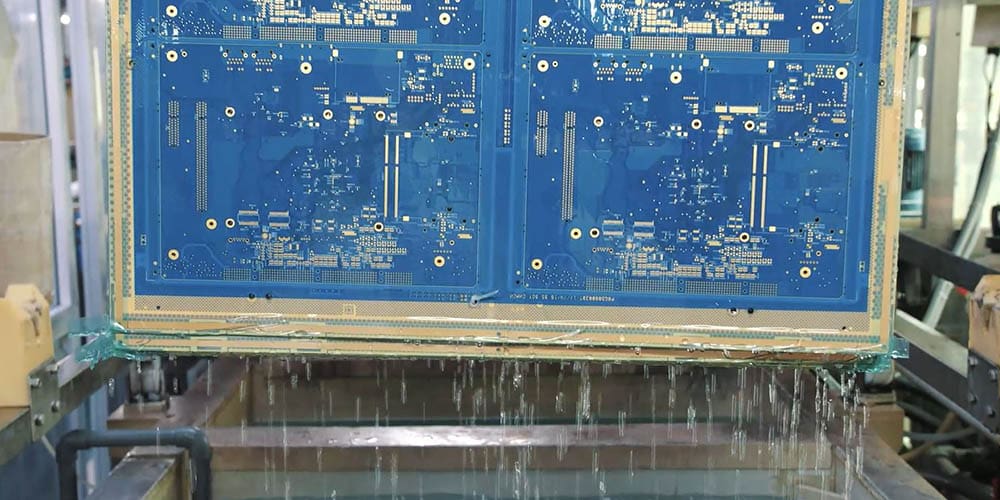
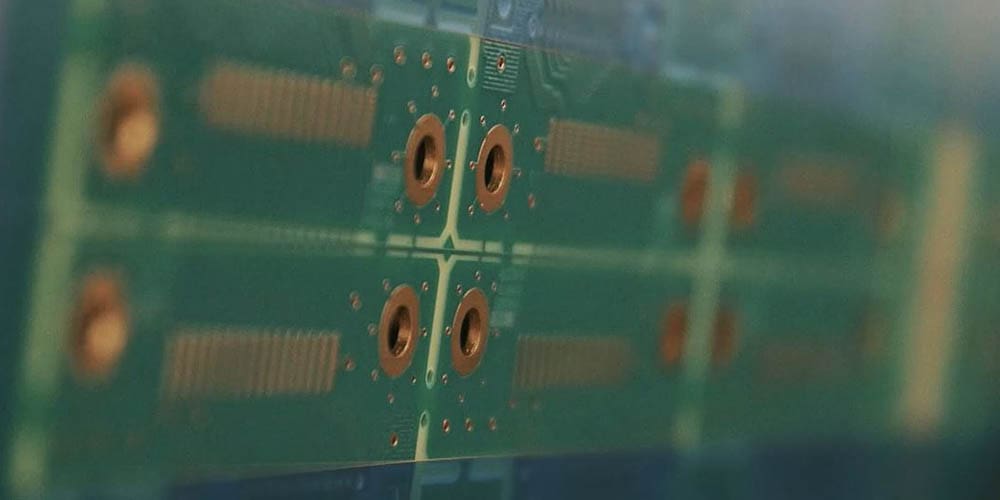
4 - HARD GOLD PLATING
For the Hard Gold Plating, the entire panel is covered by tape. Only the part that requires the application of a surface finish is removed. Unlike ENIG, in this case, the copper thickness can vary by controlling the duration of the plating cycle. The nickel is first electrodeposited, then the gold is deposited according to the customer’s request. The gold thickness provides an excellent shelf life but also one of the most expensive surfaces finishing options. To sum things up, Hard Gold Plating surface finish has mechanical properties, excellent shelf life and provides a flat surface. There are also drawbacks such as high cost, poor solderability and the process is complex.
5 - IMMERSION TIN
Immersion Tin is a metallic finish deposit.
The boards are immersed in several chemical baths to create the best adhesion for the tin. The immersion will provide perfect flatness and the tin will best protect the underlying copper. It is a cost-effective option, but the strong affinity between the tin and the copper can lead to tin whiskering.
Immersion Tin surface finish is widely available, provides a flat surface, it is a cost-effective solution, has good shelf life and is reworkable.
There are also drawbacks such as the rework which is limited, handling can be sensitive and there are possibilites of tin whiskering.
ICAPE Group calls specifically for a high-tech finishing product a partnership with German-based factories to realize the Immersion Tin who suits which corresponds to the expectations of the German automotive industry.
